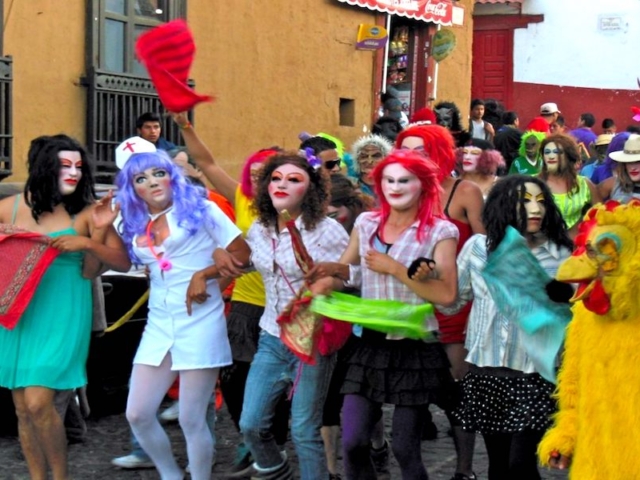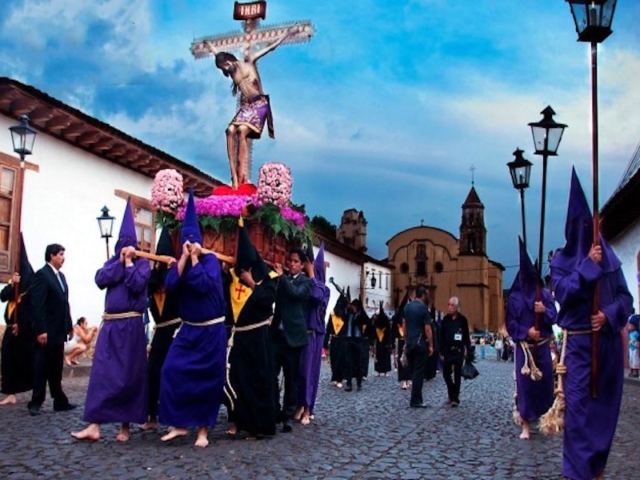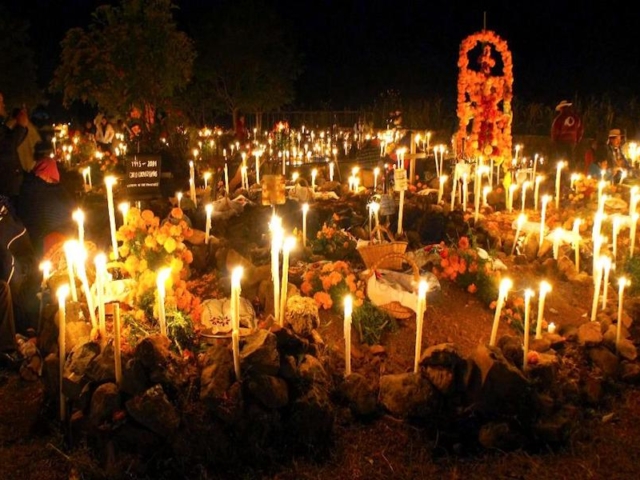Ubicación: Tzintzuntzan
Just 17 kilometers from Pátzcuaro, this Magical Town offers you a window to the greatness of its indigenous origins, being the cradle of the Purépecha culture and the ancient capital of Michoacán.
In addition to its pre-Hispanic heritage, Tzintzuntzan is home to one of the most important convent complexes from the colonial era: the Ex Convento Santa Ana, whose construction began at the end of the 16th century and was completed in the 17th century. This convent, with its architecture evoking a medieval fortress, is a testament to the spiritual conquest of New Spain. In its atrium you can find ancient olive trees brought from Europe, some of which are over 400 years old. Explore the interior of the convent and discover its fascinating museography, which will guide you through cells, rooms and corridors full of history. Among the most curious elements is a mural that was banned for centuries for depicting a crucified Augustinian friar, an image that reflects the religious intensity of the time.
Tzintzuntzan's charm is not limited to its history. Its handicrafts are a colorful reflection of the skill and creativity of local artisans. Pottery, wooden furniture, embroidered textiles and burnished clay items are just some of the creations that brighten up its markets and tianguis. Each piece tells a story and is a testament to the indigenous ingenuity that lives on in this region.
Orígenes y Evolución del Carnaval El carnaval es una festividad de raíces muy antiguas que se remonta a rituales paganos de civilizaciones como las de Egipto y Sumeria, en los que se celebraba la renovación de la vida al final del invierno. Con el tiempo, estas celebraciones se transformaron y,…
Ver másLa Semana Santa en Michoacán no es solo una celebración religiosa; es un viaje en el tiempo que combina la ferviente fe católica traída por los conquistadores españoles con las raíces profundas de la cultura purépecha. Este evento, que se remonta al siglo XVI, se ha convertido en uno de…
Ver másOur tradition of commemorating the dead is one of the most beloved and widespread in our country. It has an eminently religious character that not only has Christian foundations taken from the custom of “honouring the faithful departed”, but also retains many of the characteristics of the funeral ritual practiced…
Ver más


